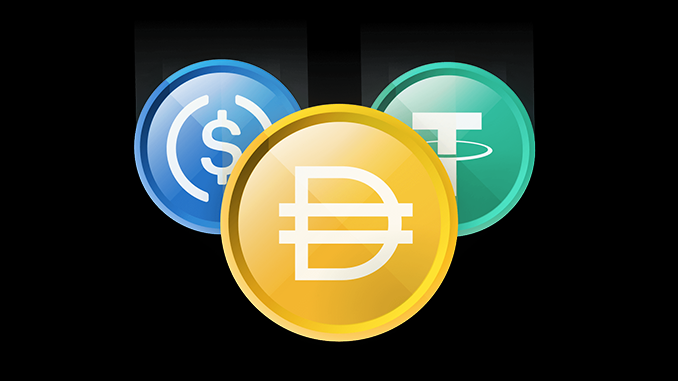
Regulators around the world are increasingly turning their magnifying glasses on stablecoins like Tether (USDT). In the crash of the Terra (LUNA) ecosystem in May, the stablecoin UST there wiped out nearly $20 billion in capital.
In the crypto industry, stablecoins such as Tether (USDT), USDC and Binance USD play a systemically important role. Around 140 billion US dollars are represented by these three stablecoins alone, which have established themselves in the top 10 of the most capitalized cryptocurrencies. What cash reserves are in the traditional financial world, stablecoins are supposed to be for the crypto industry. However, there are always doubts as to whether these altcoins, which are actually firmly pegged 1:1 to the US dollar, would also pass stress tests. The special form of an algorithmic stablecoin called UST, for example, was the main reason for the crash of the Terra (LUNA) ecosystem in May, in which a total of around 40 billion U.S. dollars virtually disappeared into thin air, 18 billion of which were held by UST.
So, basically, it comes as little surprise that regulators from the U.S. to Europe and Japan are looking at how to deal with stablecoins. The business news agency Bloomberg has highlighted the situation for Tether, USDC and Co. in a recent market report. According to the report, it appears that regulators are working toward treating stablecoin issuers the same as payment service providers and related financial companies. For the stablecoin sector, this will develop into a scenario in which it will have to be decided individually for each stablecoin whether it can continue to exist – experts say.
Reserves of Tether possibly not stably organized
Bloomberg examines the situation using the two best-known and most capitalized stablecoins Tether and USDC. Tether had admitted for the first time in 2019 that it had not fully backed USDT with fiat reserves as actually stated. In the meantime – also due to legal requirements – Tether publishes a report from external auditors every quarter. It is striking that cash only plays a minor role in Tether’s reserves, and instead commercial papers have recently guaranteed 8.4 billion of the company’s market capitalization of 67 billion US dollars. But in an expected U.S. law on stablecoins, restrictions on money market paper are to be expected because this financial instrument already proved vulnerable in 2020, Bloomberg said. U.S. Senator Elizabeth Warren says the construction on Tether is “another gigantic red flag” and proof that intervention is needed in the general interest.
USDC on track to become global stablecoin number one?
At USDC – market cap $53 billion – transparency and hedging look much better, according to Bloomberg. There are monthly independent audit reports on USDC and a weekly report from Circle, the crypto finance firm behind USDC. In addition, there are reports to the U.S. Securities and Exchange Commission (SEC). According to the report, USDC currently secures its 1:1 peg to the U.S. dollar about 20 percent through cash reserves and 80 percent through short-term U.S. government bonds. This model seems promising, although in perspective it would be possible that issuers of stablecoins would have to report reserves on a daily basis, Bloomberg quotes experts. This could also result in Tether losing its supremacy as the mother of all stablecoins.
Binance USD in the green?
The world’s largest crypto exchange Binance also organizes its own stablecoin BUSD in cooperation with the US crypto company Paxos. For BUSD, monthly attestations are published by Paxos itself, which do not go into much detail. After all, BUSD gathers about $18 billion in market capitalization behind it, and even though the stablecoin has not been talked about so far, Binance must be prepared to make significant improvements in its audit reports.
End for stablecoins like Julian Hosp’s DUSD and Tron’s USDD draws closer
The way Bloomberg portrays the developments and atmosphere on stablecoins, it is relatively clear: stablecoins without hard currency backing will be weeded out by regulators. The concept of algorithmic stablecoins, as with Terra UST, is likely to be affected across the board, with examples of DUSD from DeFiChain with Julian Hosp already failing. USDD from Tron kept the crypto scene on tenterhooks in June when the 1:1 peg to the US dollar was lost for weeks. A stablecoin GHO planned at AAVE would also be unlikely to be approved.
Conclusion: market shakeout for stablecoins is in the interest of investors
Some crypto investors continue to harp on basic ideas that regulators want to connect influences. But the bulk of the crypto industry has come to understand in recent years: Regulation is not intrinsically harmful because it reinforces trust and security, which is what makes mass adoption of Bitcoin and co. possible in the first place. Therefore, intervention by regulators in the major Western economies in the stablecoin sector should pay off in the medium term if it removes dubious representatives from the market. Meanwhile, properly established stablecoins are facing competition from elsewhere: banks are already launching their own stablecoins and central banks are preparing government-backed digital currencies (CBDCs) – these two models could compete directly with the crypto industry’s stablecoins.

Leave a Reply